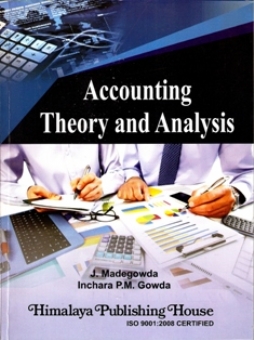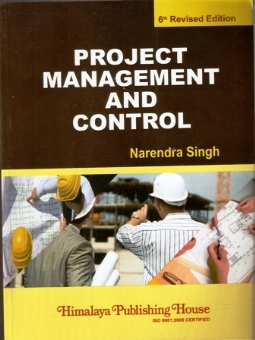The Universities are in the process of revising their syllabi as to make it more competitive globally and to develop the culture of critical thinking and creativity amongst their students to make them Research and Industry oriented.
In the above process, Tamil Nadu State Council for Higher Education has introduced a common/ unified syllabus for all its State Universities and Colleges in 2023. This book on ‘Properties of Matter and Sound’ is written to cater to the needs of students of B.Sc. I semester Physics. The subject matter is woven systematically, concept oriented with required theory and equal emphasis on experiments. To understand the applications of the theory and to develop the problem solving capacity, a large number of worked out examples and problems are given at the end of each chapter. To self- check the concepts of the subject, the True- False, Fill in the Blanks and Multiple Choice questions are given in a good number. Short answer and Long answer questions are liberally given to test the capability of expression and depth of the knowledge of the subject.
The subject matter of the book is broadly divided in two groups: Properties of matter, consisting of three topics, namely—Elasticity & Bending of Beam, Fluid Motion—Surface Tension and Viscosity and —Sound consisting of Harmonic Oscillations, Wave Motion, Acoustics and Ultrasonic Waves.
The chapter-1, deals with the Elasticity and Bending of a Beam. Starting with the concepts of stress, strain, modulus of elasticity, ‘Y’, K, n, and σ, the relations between these elastic constants are derived with the concepts of compression, extension and shear. The theory of torsion of cylinder and its applications in the experiments for measuring modulus of rigidity by Barton’s apparatus, torsion pendulum and Maxwell’s needle are described in details. Bending of a Beam, a most important subject of Structural Engineering, is discussed with the derivation of expression for the depression in cantilever, with load, without load- only its weight, its oscillations and its use
in the derivation of elevation (depression) at the middle for uniform (non- uniform) bending in a beam. The Koenig’s method for non- uniform bending and Pin & Microscope / optical Lever method for uniform bending of beam are described with the point of view of theory as well as practical. The Searle’s dynamic method is also discussed in details with the required theory.
The chapters – 2 and – 3 cover the Surface Tension and Viscosity respectively, the important topics of Fluid Dynamics. The effect of surface tension on shape of liquid drops in contact with solid, on another liquid, excess of pressure on the curved surface, inside a bubble, inside a soap bubble and capillary rise are discussed with theory in chapter – 2. The common methods for determining surface tension of liquid at the undergraduate level, such as Quincke’s drop method, Jaeger’s method, Ferguson’s method are discussed in details so that students can perform well in the lab also. The basic concepts of Viscosity, such as fluid flow, its continuity, Bernoulli’s equation, Reynold’s number, the derivation of Poiseuille’s formula, Stoke’s law for viscous force and Meyer’s formula for viscosity of gases are described in chapter – 3. The experiments for the determination of coefficient of viscosity with Poiseuille’s method and Stoke’s method of liquids and Rankine’s method for a gas are described for the purpose of theory as well as practice in lab.
The chapter – 4 is devoted to Harmonic Oscillations of a particle or a rigid body, in which simple harmonic oscillations, the superposition of two collinear oscillations of equal frequencies, unequal frequencies (Beats) and mutually perpendicular Oscillations ( Lissajous figures) are described . Damped and Forced Oscillations with the resonance theory are discussed in details.
The chapter – 5 deals with Wave Motions. Waves, their characteristics, equation of plane progressive waves, transverse vibrations on a stretched string , longitudinal waves in a fluid or gaseous medium , stationary waves in a linear bounded medium and on a stretched string fixed at its both ends are described with necessary theory. The most common experiments of the undergraduate laboratory, the Melde’s experiment and sonometer for determining the frequency of ACmains are discussed in length.
Acoustics of Building, a very important subject of architectural acoustics, has been given a good space as chapter – 6. With the brief concept of music and loudness, musical important terms, pitch, quality, the Rayleigh disc method for determining sound intensity is described along with the reverberation and reverberation time. The derivation of Sabine’s formula, measurement of reverberation time, factors affecting acoustics and their remedies and the methods of reducing reverberation are also discussed in details. The production, detection, applications of Ultrasonic Waves are given in chapter – 7, along with the acoustic grating method of determining the velocity
of ultrasonic waves. Ultrasonic flaw detector is discussed as NDT- method.
Contents –
1. ELASTICITY AND BENDING OF BEAMS
Introduction; Stress; Strain; Hooke’s Law and Modulus of Elasticity; Young’s Modulus; Bulk Modulus; Modulus of Rigidity (Shear modulus); Poisson’s ratio (Determination of for rubber); Compression, Extension and Shear; Relations between four Elastic Constants; Work Done per unit volume in Deforming a Body; Torsion of a cylinder; Determination of Modulus of Rigidity (Statical Method – Barton’s Method – Vertical & Horizontal Arrangements); Torsion Pendulum (Dynamical Method); Maxwell’s Needle; Bending of Beams; Cantilever; Oscillations of a Cantilever; Beam loaded at the middle point and supported at its ends; Experiments to Find ‘Y’ by Bending of Beam loaded at the middle; Koenig’s method for non-uniform bending of beam; Uniform bending of beam; Girders; Searle’s dynamical method; Exercises; True/False; Fill in the Blanks; Multiple Choice Questions; Short Answer Questions; Problems; Long Answer Questions.
2. FLUID DYNAMICS/SURFACE TENSION
Introduction; Surface Tension; Molecular Interpretation of Surface Tension; Shape of Drops; Shape of a liquid in contact with a solid; Angle of Contact (mercury and glass); Wetting (Equilibrium of a liquid drop on a solid- Neumann’s triangle); Equilibrium of a liquid drop resting on another liquid; Quincke’s drop method for the determination of Surface Tension and angle of contact; Excess of Pressure inside a curved surface; Excess Pressure inside a drop and bubble; Measurement of Surface Tension of soap solution; Capillarity (Capillary action); Jaeger’s Method for the determination of Surface Tension; Ferguson’s Method of Determining Surface Tension; Physical phenomena based on Surface Tension; Exercises; True/False; Fill in the Blanks; Multiple Choice Questions; Short Answer Questions; Problems; Long Answer Questions.
3. FLUID DYNAMICS—VISCOSITY
Introduction; Fluid Flow; Stream Line and Turbulent Flow; Equation of Continuity; Bernoulli’s Equation; Viscosity; Fugitive Rigidity; Critical Velocity and Reynold’s Number; Liquid flow through a narrow tube (Poiseuille’s Formula–Experimental Method); Flow of fluid through the combination of Capillaries (Series and Parallel); Stoke’s Law for viscous force (Terminal velocity); Falling sphere Viscometer; Determination of Viscosity of a Gas; Rankine’s method for determining Viscosity of a gas, Effect of Temperature and Pressure on the Viscosity of liquids; Exercises; True/False; Fill in the Blanks; Multiple Choice Questions; Short Answer Questions; Problems; Long Answer Questions.
4. HARMONIC OSCILLATIONS
Introduction; Simple Harmonic Oscillations; Differential Equation of SHM and its solution; Variation of Energy with distance of a particle executing S.H.M; Superposition of two collinear oscillations (Interference- having equal frequencies,); Superposition of two collinear oscillations having unequal frequencies (Beats); Superposition of two perpendicular harmonic oscillations (Lissajous Figures–Equal frequencies, Frequency ratio 2:1); Experiments demonstrating Lissajous Figures; Damping; Damped Harmonic Oscillator; Power Dissipation and Quality Factor; Forced Harmonic Oscillator, Transient and Steady States; Resonance and Sharpness of Resonance; Power Dissipated and Quality Factor, Exercises; True/False; Fill in the Blanks; Multiple Choice Questions; Short Answer Questions; Problems; Long Answer Questions.
5. WAVE MOTIONS
Introduction; Waves (Characteristics); Plane and Spherical Waves; Characteristics of Wave Motion; Longitudinal and Transverse Waves; Plane Progressive harmonic waves; Energy Transport in a plane progressive wave; Transverse Vibrations on a stretched string; Velocity of Longitudinal waves in a fluid in a pipe (Newton’s Formula and Laplace’s Correction); Standing or Stationary Waves in a linear bounded medium; Rate of flow of energy of a Wave in a linear bounded medium; Difference between Progressive and Stationary Waves; Stationary Waves on a stretched string fixed at both ends (Laws of transverse vibrations of a string); Melde’s Experiment (Frequency of AC- mains); Sonometer; Exercises; True/False; Fill in the Blanks; Multiple Choice Questions; Short Answer Questions; Problems; Long Answer Questions.
6. ACOUSTICS OF BUILDING
Introduction; Noises and Musical sounds; Important common terms in music; Loudness; Loudness and Decibel; Rayleigh disc method for determining sound intensity; Pitch; Quality; Eco and Reverberation; Reverberation and Reverberation Time of sound in a Hall; Derivation of Sabine’s Formula for time of reverberation; Measurement of reverberation time; Factors affecting acoustics of buildings and their remedies; Necessary conditions for good acoustics; Exercises; True/False; Fill in the Blanks; Multiple Choice Questions; Short Answer Questions; Problems; Long Answer Questions.
7. ULTRASONIC WAVES
Ultrasonics; Production of Ultrasonics (Mechanical Method, Magneto-striction Generator, Piezo- Electric Generator); Detection of Ultrasonic Waves; Applications of Ultrasonic Waves; Determination of velocity of ultrasound in a liquid (by Acoustic Grating); Ultrasonic Non-Destruction Testing (NDT); Exercises; True/False; Fill in the Blanks; Multiple Choice Questions; Short Answer Questions; Problems; Long Answer Questions.
INDEX







